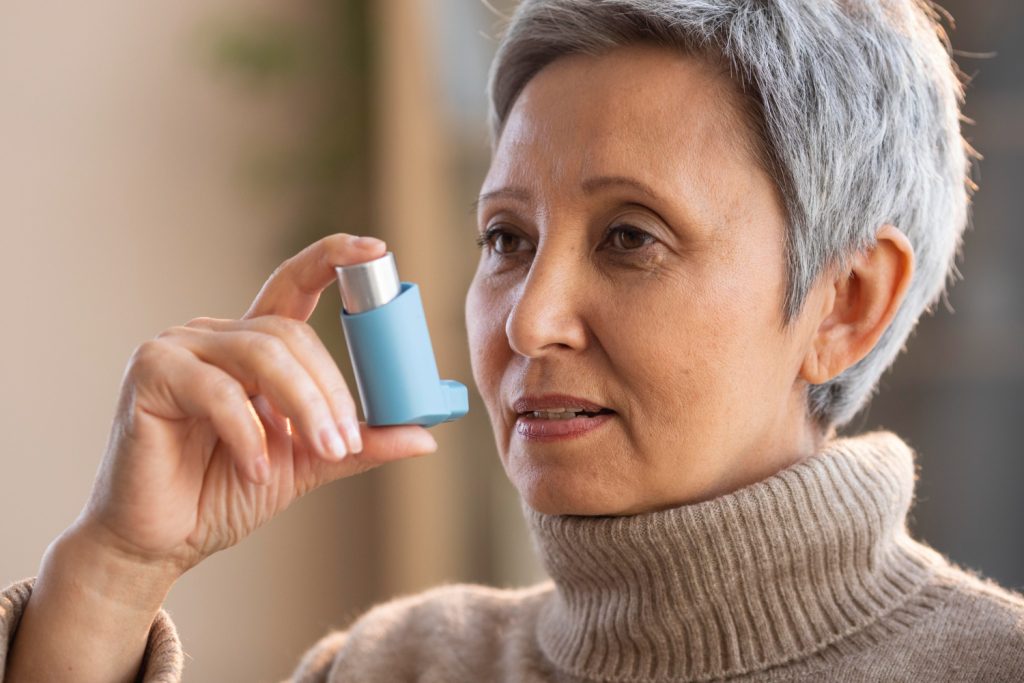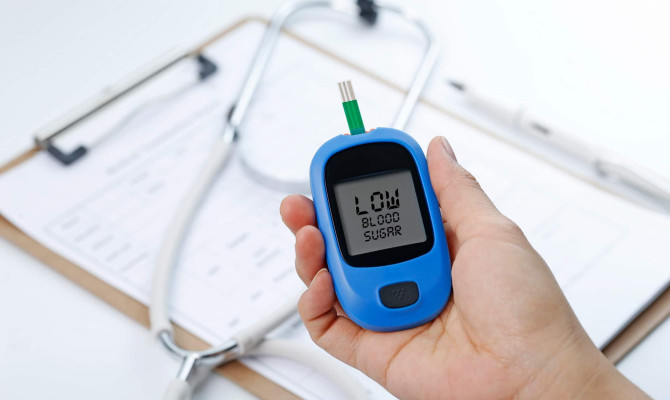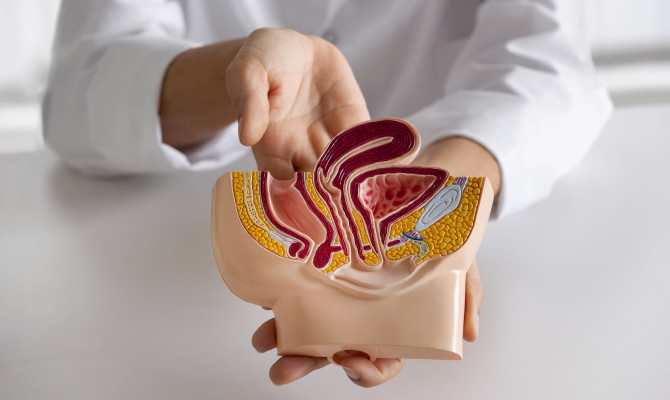A Breath Of Fresh Air: Self-Care Techniques For Asthma

- Asthma
- 11 Oct 2023
Overview
Asthma
Lung illness asthma, also called bronchial asthma, damages your lungs. Asthma is a chronic condition, so it needs continuous monitoring and medical care. Shortness of breath, coughing, sneezing, and tightness in the chest are among the symptoms. The symptoms and signs involved can be either severe or mild, and they can alter with time. Despite the fact that asthma can be a life-threatening illness, proper treatment can help to manage asthma. But people who exhibit asthma symptoms have to consult a medical expert. 5 Overview| Researched based study from Centers for Disease Control and Prevention

Asthma Attack
What is an Asthma Attack?
- Asthma causes nighttime coughing and early morning wheeze, as well as difficulty in breathing, wheezing, and tightening of the chest.
- Taking medication and avoiding the things that set off an episode can help you manage your asthma.
- You should also get rid of allergens in your environment that could trigger your asthma.
- Your lung’s airways enlarge on the sides and contract during an asthma episode.
- By being aware of the symptoms of an asthma attack, avoiding triggers, and according to your doctor’s recommendations, you can manage your condition. 5 Asthma Attack| Researched based study from Centers for Disease Control and Prevention
Treatment
What is the Best Treatment for Asthma?
Some people frequently take medications to treat and avoid symptoms. Your therapy could be changed by your doctor till your allergies and asthma symptoms have subsided. 4 Treatment| Researched based study from National Institutes of Health
Rapid-acting medications:
Medications for immediate relief aid in preventing or reducing asthma attack symptoms. When it comes to mild asthma or asthma that only flares up during physical exercise, these can be the only medications required. You will be given a quick-relief inhaler by your doctor to keep with you at all times. Rapid-acting medication categories include:
Short-acting beta 2-agonists:
- During an asthma episode, short-acting beta 2-agonists (SABAs) are inhaled to widen the airways and allow air to pass through them.
- Tremors and an accelerated pulse are examples of side effects.
Oral corticosteroids:
- The swelling in the airways brought on by serious asthma symptoms can be reduced with oral corticosteroids.
Short-acting anticholinergics:
- Anticholinergics having a short half-life help to expand the airways quickly.
- Although this medication may not be as effective as SABAs, it is an alternative for those who may have SABA-related adverse effects. [4]
Long-term regulating drugs:
To help control symptoms and help avoid asthma attacks, your doctor may recommend taking certain medications regularly.
Corticosteroids:
- Medicines containing the steroid hormone lessen bodily inflammation.
- Compared to the inhaled version, the tablet form may cause more serious adverse effects.
- High doses over time might increase the risk of osteoporosis or cataracts.
- A hoarse voice or a mouth infection thrush are typical adverse effects of inhaled corticosteroids.
Biologic Medicines:
- Biologic drugs are often administered to treat extreme cases of asthma.
- These include drugs that are injected into a vein or underneath the skin, such as bevacizumab.
Leukotriene Modifiers:
- They help in keeping the airways open while reducing edema.
- These tablets may be prescribed by your doctor alone or together with steroid medication.
Inhaled mast cell stabilizers:
- When you are among allergens or similar asthma triggers, inhaled mast cell stabilizers like Cromolyn assist in avoiding swelling in your airways.
Long-acting bronchodilators:
- To stop your airways from narrowing, you may add long-acting bronchodilators to your inhaler, such as long-acting beta 2-agonists.
Allergy injections:
- Subcutaneous immunotherapy (SCIT), often known as allergy injections, lessens the body’s reaction to allergens. [4]
Remedy for asthma without an inhaler:
To manage your asthma symptoms, your doctor may prescribe a few drugs. These consist of:
Bronchodilators:
- Bronchodilators are drugs that relax the muscles surrounding your airways.
- These drugs are used in the management of both chronic and intermittent asthma and give quick symptom relief.
- They also ease mucus passage throughout the airways.
Anti-inflammatory drugs:
- These medications reduce pulmonary edema and production of mucus.
- The doctor might recommend them for everyday usage to treat or avoid chronic asthma symptoms.
Use a nebulizer:
- Along with using a metered-dose inhaler, oral medications can also be given by the doctor. 2 Treatment | Researched based study from Cleveland Clinic
Tips
Self-Care Tips for Asthma
Limiting symptoms, preventing asthma episodes, and avoiding medication adverse effects are the main objectives of treating asthma. You may take charge of your asthma treatment by using the next three steps.
Adhere to your asthma plan of action:
You and your medical team could collaborate to draft an asthma action plan. This plan outlines your daily decision-making process as well as when to take medication. Controlling your asthma requires sticking to this approach.
- Green: When you feel good and have no symptoms of asthma, you should be in the green zone of the plan. Your daily long-term control medication dosage is specified in the plan. It also instructs you on how many puffs to use before exercising using a quick-relief inhaler.
- Yellow: If you experience symptoms, the yellow zone instructs you on what to do. It details when and how many puffs should be taken while using a quick-relief inhaler. Additionally, it outlines what to do if your symptoms do not go away and when to contact your care team.
- Red: The red zone indicates when you should seek emergency care if your symptoms do not get better or develop worse. 9 Self-Care Tips | Researched based study from Asthma and Allergy Foundation of America
Utilize lung testing at home:
You could be required to utilize a tool that gauges how well the lungs are functioning by your medical team. It is called a lung function test. You might employ one of these gadgets:
- Flow peak meter: The speed at which you can expel air from your lungs is measured by this equipment.
- Spirometer: The amount of air the lungs can contain and how rapidly you can exhale are both measured with a spirometer. This is frequently expressed as a percentage. 1 Self-Care Tips | Researched based study from Mayo Clinic
Keep an asthma journal:
Keep a daily journal for your asthma. You can keep track of the symptoms using this information, and you can provide your medical staff with precise information.
Note the following details:
- Dosage of both long-term and emergency medications you take every day.
- Describe your signs and symptoms.
- Length and severity of the symptoms.
- Time of day that symptoms first appear.
- Possible symptoms, such as allergies or physical activity.
- Difficulty with day-to-day activities like work, school, exercise, or other daily tasks due to asthma symptoms.
- Lung function test results.
- Urgent care or unscheduled visits for asthma. 9 Self-Care Tips | Researched based study from Asthma and Allergy Foundation of America
Avoid

What Should I Avoid in Asthma?
It is crucial to manage your asthma and stay away from triggers that might exacerbate your symptoms or cause asthma attacks if you have the illness. Here are some things to stay away from: 2 Things to Avoid| Researched based study from Cleveland Clinic
Avoid smoking and indirect smoke:
- Smoking is a significant asthma trigger and can significantly exacerbate the symptoms you have.
- Refrain from smoking and avoid areas where individuals are smoking.
- People suffering from asthma are also harmed by secondhand smoke.
Avoid allergens:
- Recognize and stay away from substances that might make the symptoms of asthma worse.
- Mold, fur from pets, allergens such as dust mites and pollen are common allergens.
- Maintain a hygienic house, cover your pillows and beds with allergen-proof coverings, and think about utilizing air purifiers.
Avoid infections:
- They can make asthma symptoms worse, including the common cold and the flu.
- Maintain proper hand hygiene, be vaccinated for the flu, and stay away from ill people up close.
Avoid perfumes:
- Strong cleaning agents and fumes from paint or other chemicals can all irritate your airways.
- When feasible, choose hypoallergenic and fragrance-free products.
Avoid breathing in dry, cold air:
- This might make asthma symptoms worse.
- Wear a scarf over your mouth and nose in chilly weather, and think about using a humidifier indoors to give moisture to the air.
Avoid Exercise:
- If exercise makes your asthma worse, do not completely stop engaging in physical activity.
- Instead, create an asthma action plan with the help of your doctor, and think about using a rescue inhaler prior to working out.
Avoid stress:
- Anxiety and emotional stress can make asthma symptoms worse.
- To reduce your stress levels, utilize stress-reduction techniques such as meditation, yoga, or practicing deep breathing.
Avoid food that triggers asthma:
- Some asthma sufferers may be hypersensitive to specific foods or food ingredients, such as sulfites.
- If you think there could be a link between a certain food and your asthma symptoms, pay attention to what you eat and get medical advice from an allergist or other specialist.
Avoid ignoring warning signs:
- Get familiar with the early indicators of a flare-up of asthma, such as excessive coughing, difficulty breathing, or heaviness in the chest.
- Ignoring these symptoms might result in a serious attack.
- Follow the asthma action plan, and when required, get medical help.
Avoid environmental pollution:
- Try to restrict outside activities on days when the air quality is bad if you reside in a region with significant amounts of air pollution.
- If necessary, use an air purifier inside. 2 Things to Avoid| Researched based study from Cleveland Clinic, 3 Things to Avoid| Researched based study from Centers for Disease Control and Prevention
FAQs
Frequently Asked Questions About Asthma
Q. What drink is good for asthma?
Caffeinated Drinks:
- Numerous pharmacological effects of caffeine include a little bronchodilator and a reduction in respiratory muscle fatigue.
- Caffeine may be able to lessen the symptoms of asthma.
- Also, keep in mind that coffee has a negligible bronchodilator effect.
- Therefore, any caffeinated beverage may cause bronchodilation.
- However, depending on how much caffeine is in the beverage, the bronchodilator effects could vary.
- Additionally, caffeine reduces respiratory muscle exhaustion and briefly enhances lung function.
Drinks with Vitamin D:
- Low vitamin D levels increase the likelihood of asthma symptoms in children and adults, and those who consume vitamin D are less likely to need hospitalization for asthma.
- Vitamin D may be present in fortified cow’s milk or plant-based milk, which, in certain situations, may assist in avoiding asthma episodes. 8 FAQs| Researched based study from Allergy & Asthma Network
Q. Is steam good for asthma?
- Leukotriene modifiers help keep the airways open while reducing edema.
- These tablets may be prescribed by your doctor alone or together with steroid medication.
- When you are among allergens or similar asthma triggers, inhaled mast cell stabilizers like Cromolyn assist in avoiding swelling in your airways.
- To stop your airways from narrowing, you may add long-acting bronchodilators to your inhaler, such as long-acting beta2-agonists. Steam helps in:
- It lessens the stuffy nose.
- It gives the airways moisture.
- It lessens tension. 7 FAQs| Researched based study from Asthma + Lung UK
Q. Why can’t asthma be cured?
- Because asthma is a complicated, chronic respiratory disorder with several underlying causes, it cannot be treated.
- Despite the fact that asthma is not curable, it may be effectively controlled with the correct care and alterations to lifestyle.
- By collaborating closely with healthcare professionals to create and keep up an asthma management plan that involves medicines, trigger avoidance, and self-care techniques, many people with asthma may enjoy healthy and productive lives.
- Research breakthroughs in asthma may result in better therapies and, ultimately, more effective ways to stop asthma from developing in the future. 6 FAQs| Researched based study from Open Access Government
Conclusion
Asthma – Not Curable but Manageable Effectively
Asthma is characterized as a chronic inflammatory illness of the upper airways that affects millions of people’s quality of life by impairing their ability to breathe. Most people do not realize how expensive asthma is for our society and health care systems. 6 Conclusion | Researched based study from Open Access Government
Any feedback on this article?
 This Articles content was accurate
This Articles content was accurate Very Informative Article
Very Informative Article I have a question or a comment
I have a question or a comment
 This article contains inaccurate content
This article contains inaccurate content This article was not helpful
This article was not helpful I have a question or a comment
I have a question or a comment
We appreciate your helpful feedback!
Checkout our social pages
References
-
Mayo Clinic
Self-Care Tips
-
Cleveland Clinic
Treatment | Things to Avoid
-
Centers for Disease Control and Prevention
Things to Avoid
-
National Institutes of Health
Treatment
-
Centers for Disease Control and Prevention
Overview | Asthma Attack
-
Open Access Government
FAQs | Conclusion
-
Asthma + Lung UK
FAQs
-
Allergy & Asthma Network
FAQs
-
Asthma and Allergy Foundation of America
Self-Care Tips




































